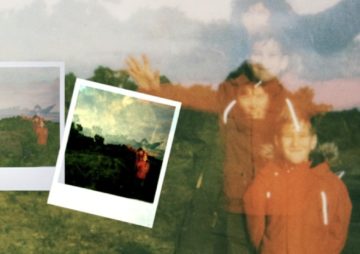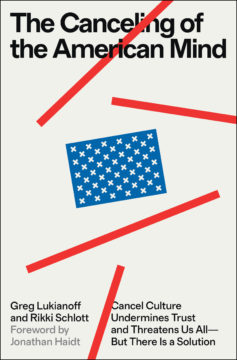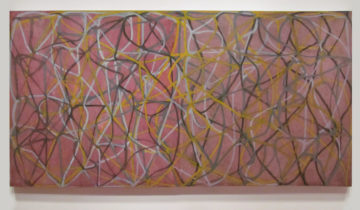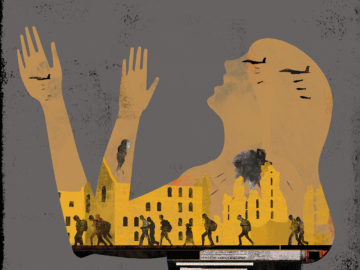Michael Fried at nonsite:
Willard Boepple’s “Shards” fuse two art forms, sculpture and monoprints, to make a third which is sui generis and yet partakes of both of the others. Most intimately, the “Shards” bear a relation to the intensely coloristic monoprints that Boepple has been making since roughly 2004 in collaboration—following his choices and decisions—with Kip Gresham, a master printmaker in Cambridge, England. As described by Karen Wilkin in her indispensable book on the artist:
Each shape goes down on the paper as an expanse of uninflected, transparent color. [The shapes determined by stencils prepared beforehand.] As other shapes are added, the overlapping hues create new densities and new colors. Changing the sequence can further alter these tonal and chromatic relationships, creating new spatial suggestions, so that we read each of these unique images differently.1
“New spatial suggestions” is right.
more here.

 “I have discovered a potion for memory and wisdom,” the Egyptian god of the underworld tells the King of Thebes in an exchange recounted by Plato. This “magic potion,” it turns out, is writing. Previously, stories and histories, facts and fables were passed on orally. Minstrels would commit to memory the whole of the story of Troy, for example, which Homer ultimately put to the page. This was challenging work, time consuming, and imprecise. Stories were liable to variation, and exaggeration. Heroes were perhaps overly exalted. Details, dates, even characters would change over time. Writing solved many of these problems, and perfected our ability to recall.
“I have discovered a potion for memory and wisdom,” the Egyptian god of the underworld tells the King of Thebes in an exchange recounted by Plato. This “magic potion,” it turns out, is writing. Previously, stories and histories, facts and fables were passed on orally. Minstrels would commit to memory the whole of the story of Troy, for example, which Homer ultimately put to the page. This was challenging work, time consuming, and imprecise. Stories were liable to variation, and exaggeration. Heroes were perhaps overly exalted. Details, dates, even characters would change over time. Writing solved many of these problems, and perfected our ability to recall. A 2019 study
A 2019 study  BRICE MARDEN was an artist for whom intensive looking was essential. To be with him in the studio or in a museum was to focus as hard as possible on the work of art in front of your eyes. Words never disrupted the silence of seeing.
BRICE MARDEN was an artist for whom intensive looking was essential. To be with him in the studio or in a museum was to focus as hard as possible on the work of art in front of your eyes. Words never disrupted the silence of seeing. Darnton chooses forty or so ‘happenings’ from the four decades before the French Revolution, each crisply recounted in chapters that rarely run to more than ten pages, and assesses what Parisians made of them. All the period’s great political événements are here: Louis XV’s calamitous foreign wars and the humiliating treaties that ended them; the repeated clashes between royal government and the Paris Parlement (the city’s hugely prestigious high court); the summoning of the Estates General and the fall of the Bastille. So too are the great cultural events of the age: we have the publication of Diderot and d’Alembert’s Encyclopédie, Rousseau’s Emile and Voltaire’s Traité sur la tolerance (his plea for religious toleration), along with the performance of Beaumarchais’s hierarchy-subverting Mariage de Figaro – the great succès de scandale of the 1770s Parisian stage – and much else. Even the first public balloon flight over Paris in 1783, emphasising the boundless possibilities of science, finds its place on Darnton’s list.
Darnton chooses forty or so ‘happenings’ from the four decades before the French Revolution, each crisply recounted in chapters that rarely run to more than ten pages, and assesses what Parisians made of them. All the period’s great political événements are here: Louis XV’s calamitous foreign wars and the humiliating treaties that ended them; the repeated clashes between royal government and the Paris Parlement (the city’s hugely prestigious high court); the summoning of the Estates General and the fall of the Bastille. So too are the great cultural events of the age: we have the publication of Diderot and d’Alembert’s Encyclopédie, Rousseau’s Emile and Voltaire’s Traité sur la tolerance (his plea for religious toleration), along with the performance of Beaumarchais’s hierarchy-subverting Mariage de Figaro – the great succès de scandale of the 1770s Parisian stage – and much else. Even the first public balloon flight over Paris in 1783, emphasising the boundless possibilities of science, finds its place on Darnton’s list. A cancer therapy may shrink the tumor of a patient, and the patient may feel better. But unseen on a CT scan or MR image, some of the cells are undergoing ominous changes. Fueled by new genetic changes due to cancer therapy itself, these rogue cells are becoming very large with twice or quadruple the number of chromosomes found in healthy cells. Some of the cells may grow to eight, 16 or even 32 times the correct number. Quickly, they will become aggressive and resistant to treatment. They will eventually cause cancer recurrence.
A cancer therapy may shrink the tumor of a patient, and the patient may feel better. But unseen on a CT scan or MR image, some of the cells are undergoing ominous changes. Fueled by new genetic changes due to cancer therapy itself, these rogue cells are becoming very large with twice or quadruple the number of chromosomes found in healthy cells. Some of the cells may grow to eight, 16 or even 32 times the correct number. Quickly, they will become aggressive and resistant to treatment. They will eventually cause cancer recurrence. During World War II, Londoners often sought shelter from German bombs in the city’s subway tunnels. There, they encountered another type of enemy: hordes of voracious mosquitoes. These weren’t your typical above-ground mosquitoes. They were natives of the Underground, born in pools of standing water that pockmarked the underground passageways. And unlike their open-air cousins, London’s subterranean skeeters seemed to love biting humans.
During World War II, Londoners often sought shelter from German bombs in the city’s subway tunnels. There, they encountered another type of enemy: hordes of voracious mosquitoes. These weren’t your typical above-ground mosquitoes. They were natives of the Underground, born in pools of standing water that pockmarked the underground passageways. And unlike their open-air cousins, London’s subterranean skeeters seemed to love biting humans. I got out of Wellesley in 1959, shortly after Lolita got out of Paris. Vladimir Nabokov’s Lolita. (Na-bwak-awf: a trip down the stairs with a loud bump and a glorious sprawl at the bottom.) I fell in love with it.
I got out of Wellesley in 1959, shortly after Lolita got out of Paris. Vladimir Nabokov’s Lolita. (Na-bwak-awf: a trip down the stairs with a loud bump and a glorious sprawl at the bottom.) I fell in love with it.

 As
As  I had left my passport at an inn we stayed at for a night or so whose name I couldn’t remember. This is how it began. The next hotel would not receive me. A beautiful hotel, in an orange grove, with a view of the sea. How casually you accepted the room that would have been ours, and, later, how merrily you stood on the balcony, pelting me with foil-wrapped chocolates. The next day you resumed the journey we would have taken together.
I had left my passport at an inn we stayed at for a night or so whose name I couldn’t remember. This is how it began. The next hotel would not receive me. A beautiful hotel, in an orange grove, with a view of the sea. How casually you accepted the room that would have been ours, and, later, how merrily you stood on the balcony, pelting me with foil-wrapped chocolates. The next day you resumed the journey we would have taken together. One of the greatest transformations in the history of life occurred more than 600 million years ago, when a single-celled organism gave rise to the first animals. With their multicellular bodies, animals evolved into a staggering range of forms, like whales that weigh 200 tons, birds that soar six miles into the sky and sidewinders that slither across desert dunes.
One of the greatest transformations in the history of life occurred more than 600 million years ago, when a single-celled organism gave rise to the first animals. With their multicellular bodies, animals evolved into a staggering range of forms, like whales that weigh 200 tons, birds that soar six miles into the sky and sidewinders that slither across desert dunes. The group behind the radical open-access initiative Plan S has announced its next big plan to shake up research publishing — and this one could be bolder than the first. It wants all versions of an article and its associated peer-review reports to be published openly from the outset, without authors paying any fees, and for authors, rather than publishers, to decide when and where to first publish their work.
The group behind the radical open-access initiative Plan S has announced its next big plan to shake up research publishing — and this one could be bolder than the first. It wants all versions of an article and its associated peer-review reports to be published openly from the outset, without authors paying any fees, and for authors, rather than publishers, to decide when and where to first publish their work.